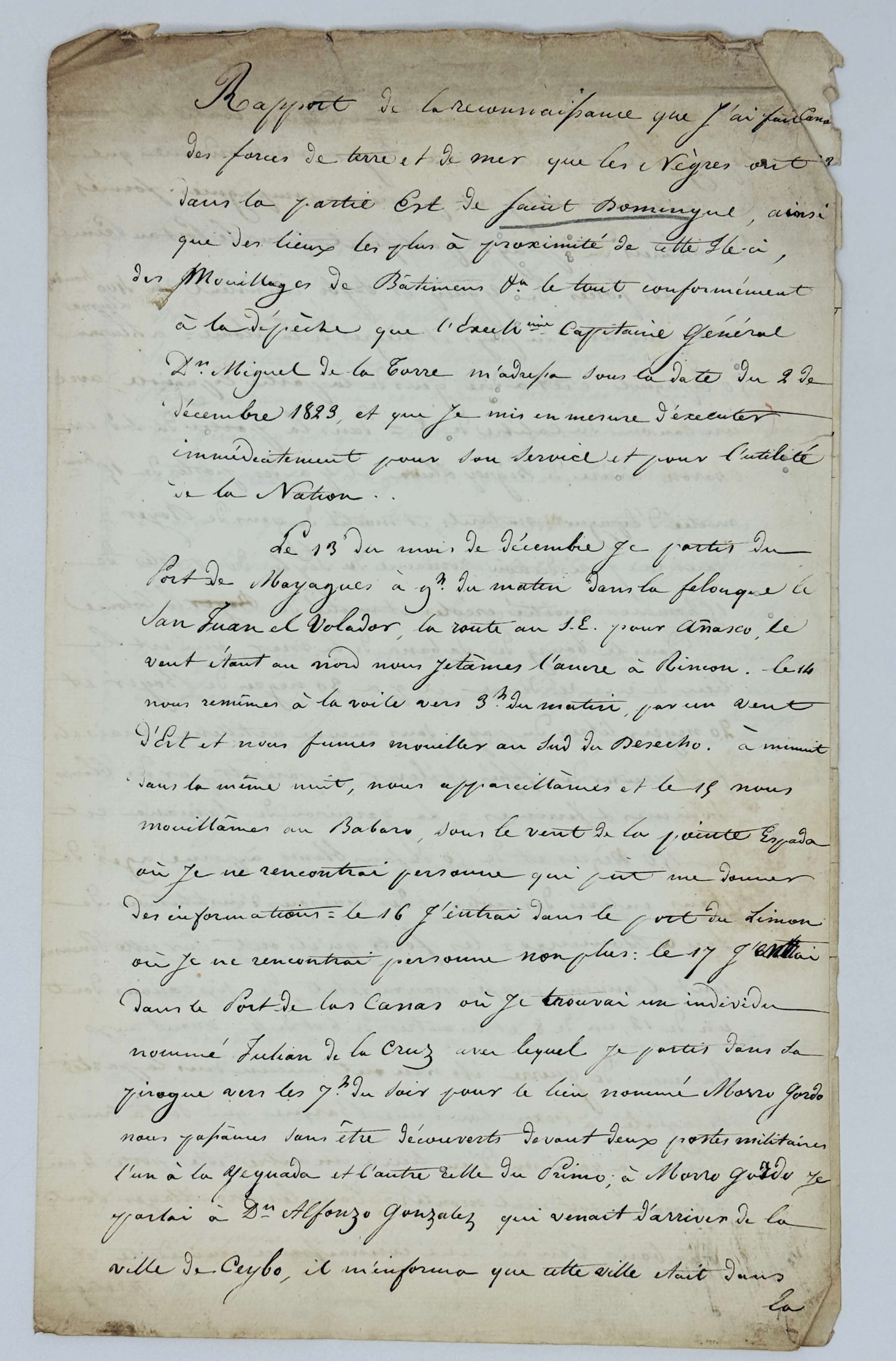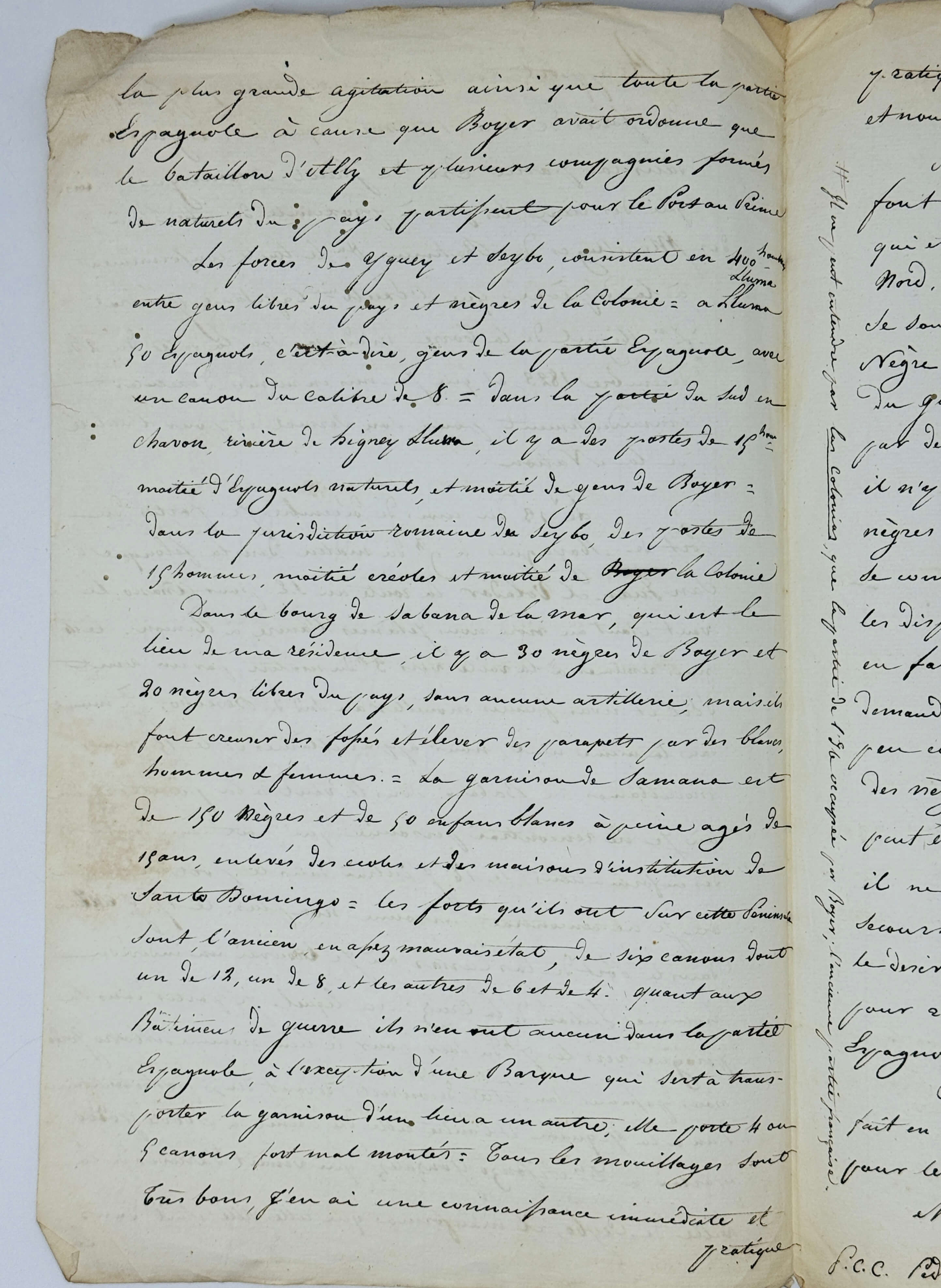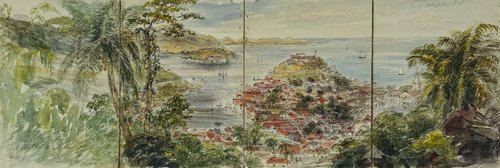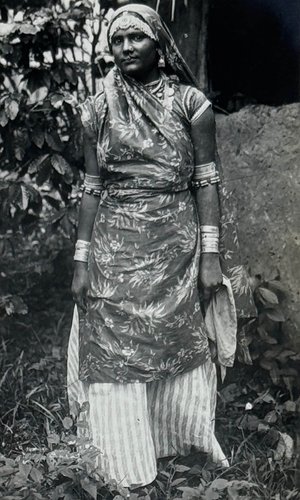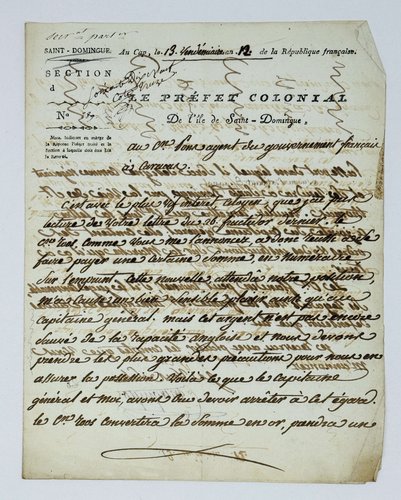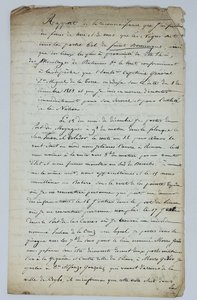
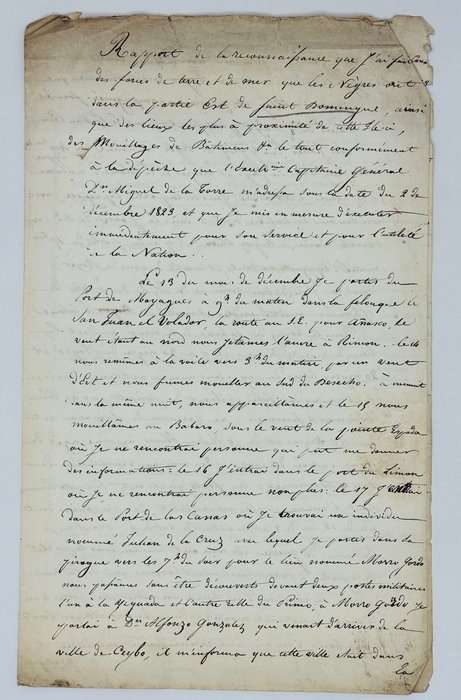
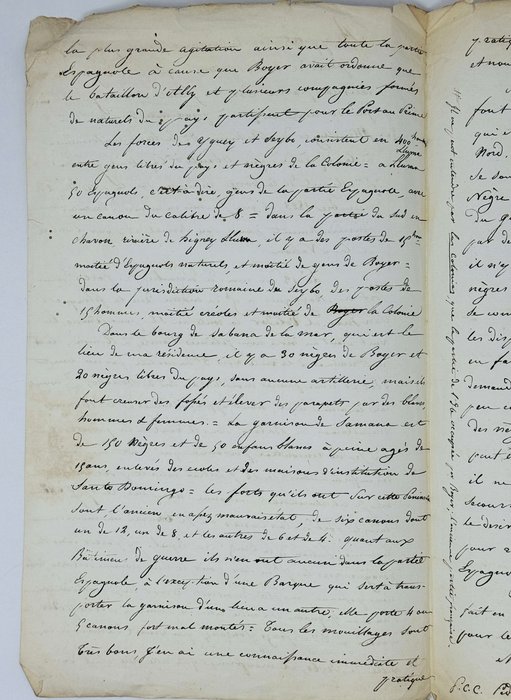
#MD27
1823
Folio bifolium (ca. 34.5 x 21 cm or 13 ½ x 8 ¼ in). 3 pp. Black ink on creamy laid paper. Paper slightly age-toned, minor tears and creases on extremities, several worm holes affecting several letters, but overall a very good manuscript.
A period French translation of a Spanish reconnaissance report of the land and sea forces of the Republic of Haiti (1820-1849) in Santo Domingo during the Haitian occupation of Santo Domingo (1822-1844). Santo Domingo was the name for the eastern Spanish portion of the island of Hispaniola. It was ceded to France in 1795 but reconquered by Spain in 1809. In 1821, Spanish rule was overthrown and Santo Domingo declared its independence as the Republic of Spanish Haiti (1821-1822).
In 1820, Jean-Pierre Boyer (1776-1850), president of the Republic of Haiti between 1818 and 1843, reunified North and South Haiti (the Kingdom and the Republic, respectively). In order to maintain Haiti’s independence, Boyer believed the unification of Hispaniola to be necessary. The Haitian occupation of Santo Domingo began in February 1822 as Boyer entered the country with his army and annexed the Republic of Spanish Haiti, and lasted until 1844 with the declaration of Dominican independence.
The report was ordered by the governor of Puerto Rico, Miguel de la Torre (1786-1843), and authored by one Diego de Lira, who travelled around Santo Domingo between 13 and 23 December 1823. The report details the number and demographics of the Haitian forces and their posts as well as their artillery in various locations in the modern-day Dominican Republic, including El Seibo (“Seybo” or “Ceybo”), Sabana De La Mar, and “Chavon” (possibly a region near the Chavon River). He also mentions that there was great unrest in El Seibo, along with the rest of the Spanish part of Hispaniola, due to Boyer ordering a battalion and several companies to be made of “natives of the country” and sent to Port-au-Prince (“[El Seibo] etait dans la plus grande agitation ainsi que toute la partie Espagnole à cause que Boyer avait ordonné le bataillon d’utlly [sic] et plusieurs compagnies formés de naturels du pays, partissant pour le Port-au-Prince”).
Of note is the fact that the document has been translated into French.
Overall, an interesting document about Haitian forces early on during the Haitian occupation of Santo Domingo.

